Mewing
Mark Honeychurch - 30th September 2024
I was sent a link to an article in the Independent the other day, and asked if I’d heard of a new thing the kids are doing called mewing. I quizzed my children about it, as they’re young and hip, and they told me that this was old news - “so 6 months ago”, apparently. But the story of mewing was more interesting that I’d first suspected it would be, and involves a good deal that’s of skeptical interest.
Firstly, to avoid confusion, the term “mewing” refers to two different things. The first of them is a gesture that kids have been using, both with each other and sometimes with parents and teachers, that is a variation of the classic shush gesture where you put your finger vertically in front of your lips while pursing them. Mewing adds to this gesture by using the same finger to trace down your jawline, before placing it on your lips. So, basically, you drag the tip of your finger down your jawline and then do a “shush”.
Apparently this gesture is being used by some kids as an excuse for not answering questions at school, and more generally as a dismissive way of refusing to engage with someone, which I could understand being quite infuriating, especially if you have no idea what the gesture is meant to signify.
So, what does it mean? Why the stroke down the jawline? Well, this is related to the second meaning of the word “mewing”, and is where we start to wade deep into pseudoscientific nonsense. The mewing gesture is supposed to be a signifier that a person is in the process of mewing, and this means that they are unable to talk.
Mewing is supposedly a technique that can help you to improve your facial structure and health - resculpting your jawline, realigning your teeth, helping with speech issues and even fixing your posture and health conditions like sleep apnoea. Yep, it’s another panacea - something that claims it can cure a whole host of disparate issues.
The internet has a lot of “supporting evidence” for the efficacy of this technique, although it mainly consists of totally uncontrolled before and after images. This one of a “dramatic” jaw change, for example, seems to just be the same guy pulling his chin backwards in one image, and pushing it out in another:
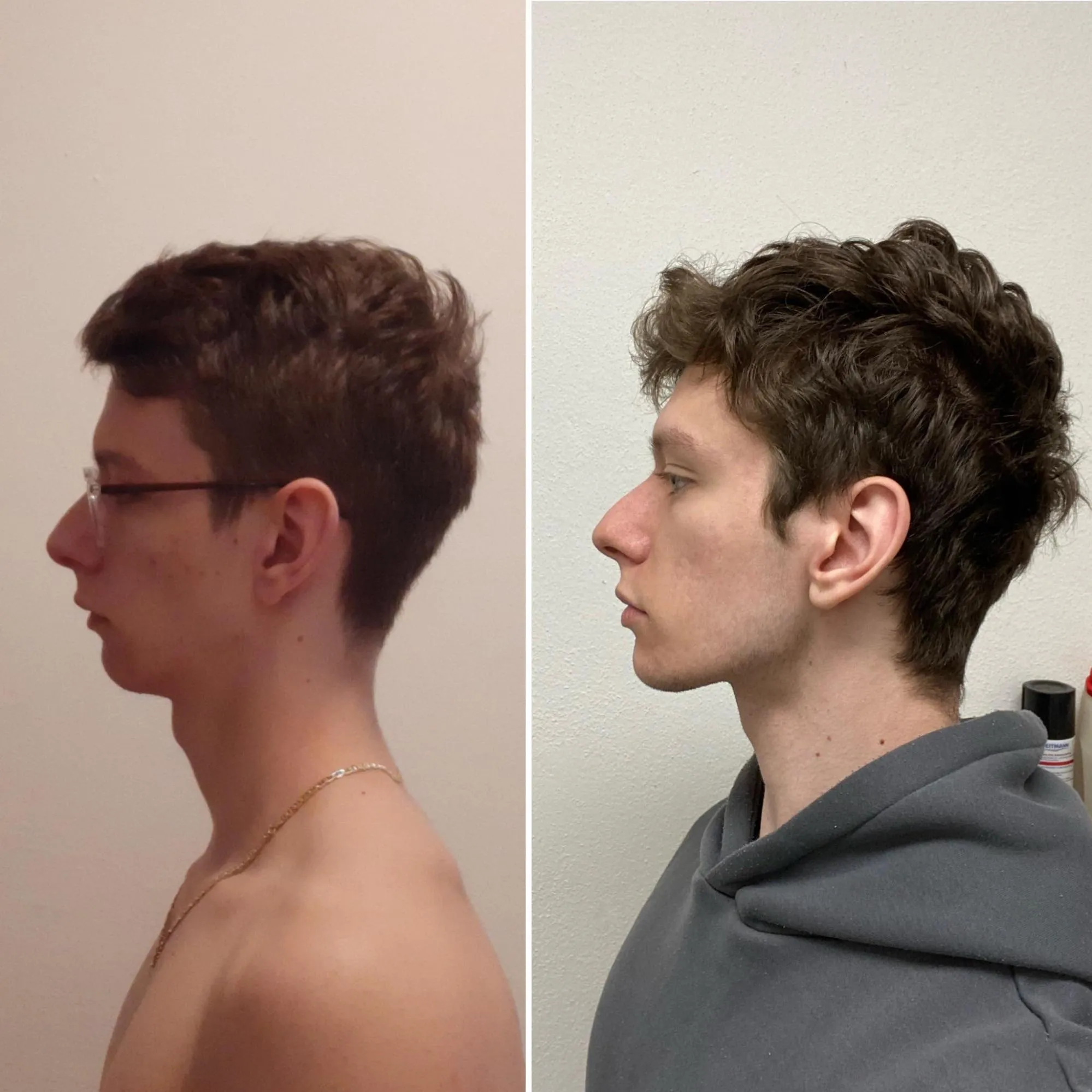
And this image of a before and after looks like it was taken mere minutes apart (from the almost identical lay of her hair), which I guess is either meant to show that mewing works immediately, or is a very amateurish attempt to make before/after photos without bothering to change anything between the two images.
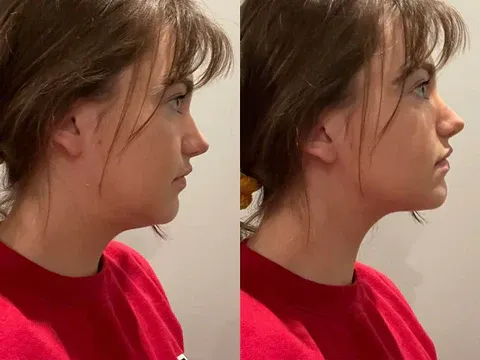
Other images show different lighting conditions, ages (some with several years between photos), use of make-up, cameras and more:
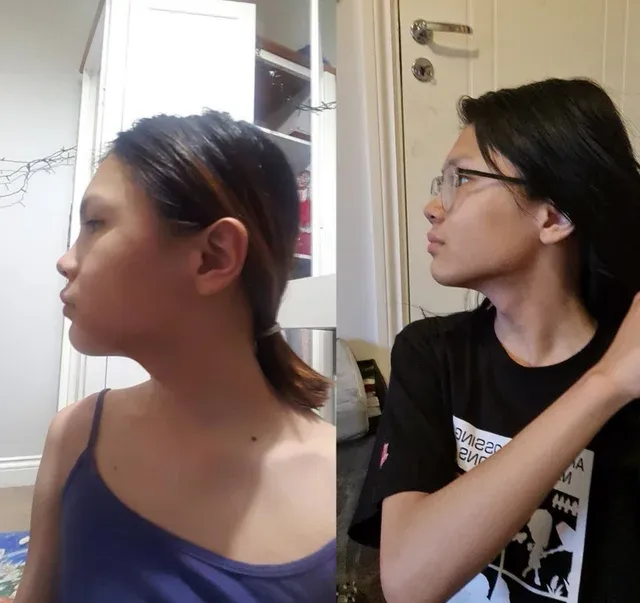
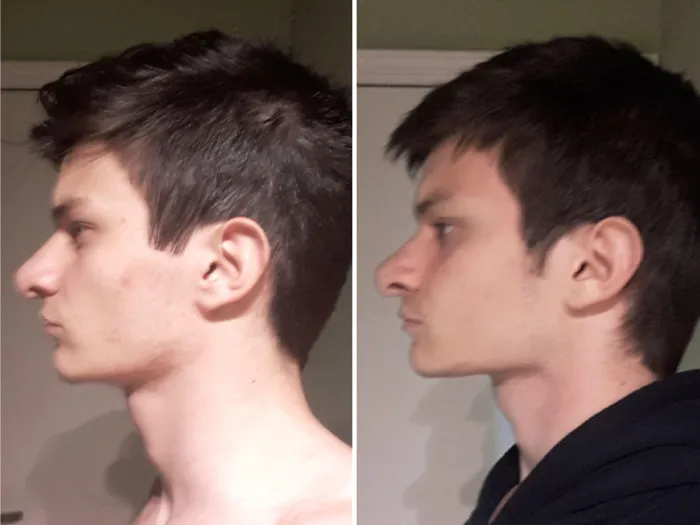
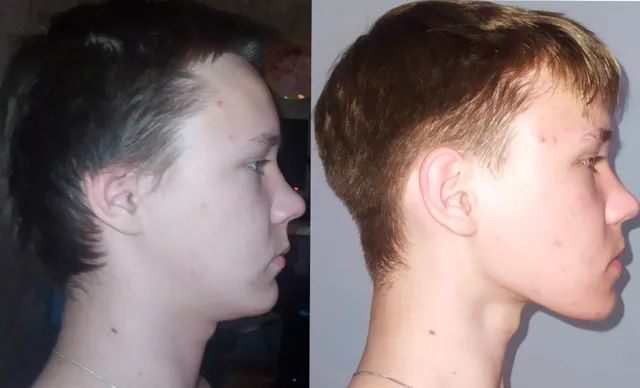
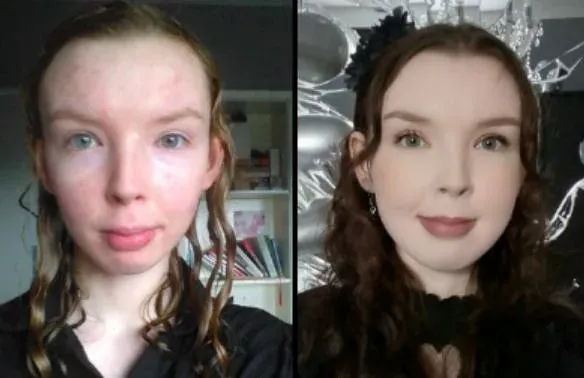
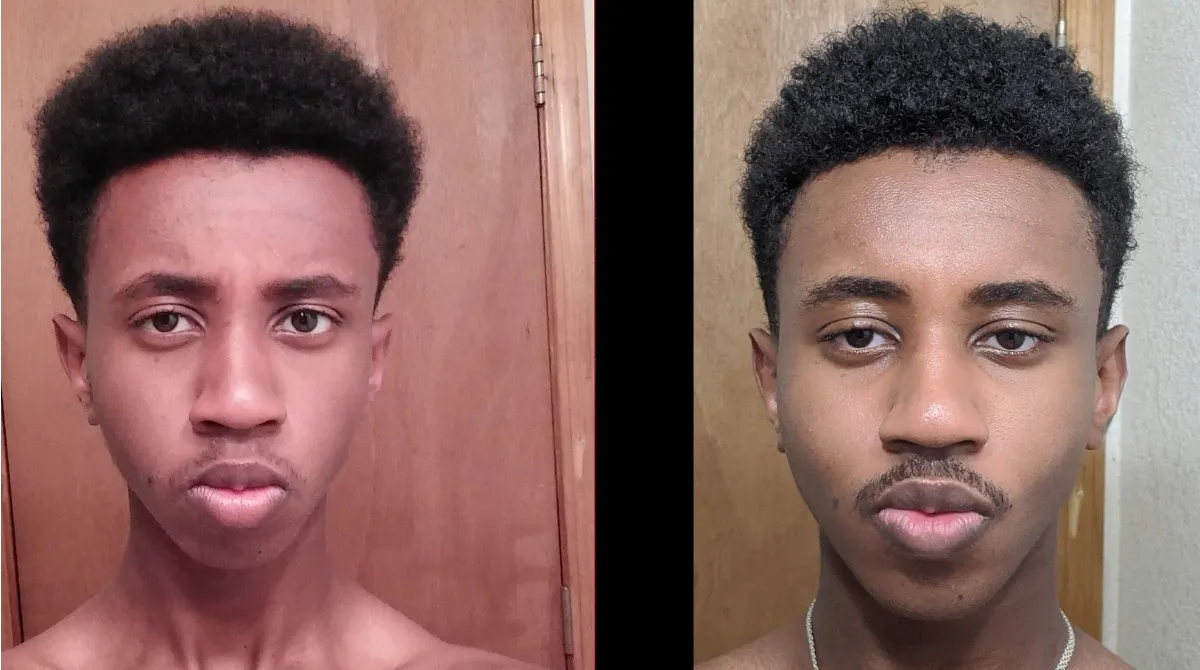
One constant seems to be that most of the people taking pictures of themselves before and after mewing, and presumably therefore most of the people who are mewing, are young (and impressionable) teens, and indeed this technique seems to be heavily promoted on TikTok, Instagram and YouTube. I guess it helps the technique to look like it’s doing something that the people who are using it and posting about their miraculous changes online are the same people whose bodies are going through rapid changes of puberty and beyond, in the period known as “adolescence”. As this paper titled “Facing changes and changing faces in adolescence” says:
adolescents… faces undergo important and dramatic biological changes with puberty; they become more sexually dimorphic (Enlow, 1990, Enlow and Hans, 1996, Farkas, 1988). Males develop more prominent jaws, cheekbones, brow ridges, and facial hair. Females develop fuller lips. Adolescents’ own faces are changing, as are the faces of their peers.
The jaw sculpting claim is why the mewing gesture involves running your finger down your jawline - you’re pointing out that you’re in the middle of working on improving your jaw. And the reason you can’t speak is because, to mew, you need to push your tongue up against the roof of your mouth, with your jaw closed and the tip of your tongue touching your teeth.
Why the name “mewing”, though? In an act of supreme humility, this name comes from a British father-son orthodontist double act, John and Mike Mew. This pair have invented and expanded on a technique they call “Orthotropics” (a Registered Trademark), which includes mewing as well as other techniques, such as a special diet and the use of palatal expanders.
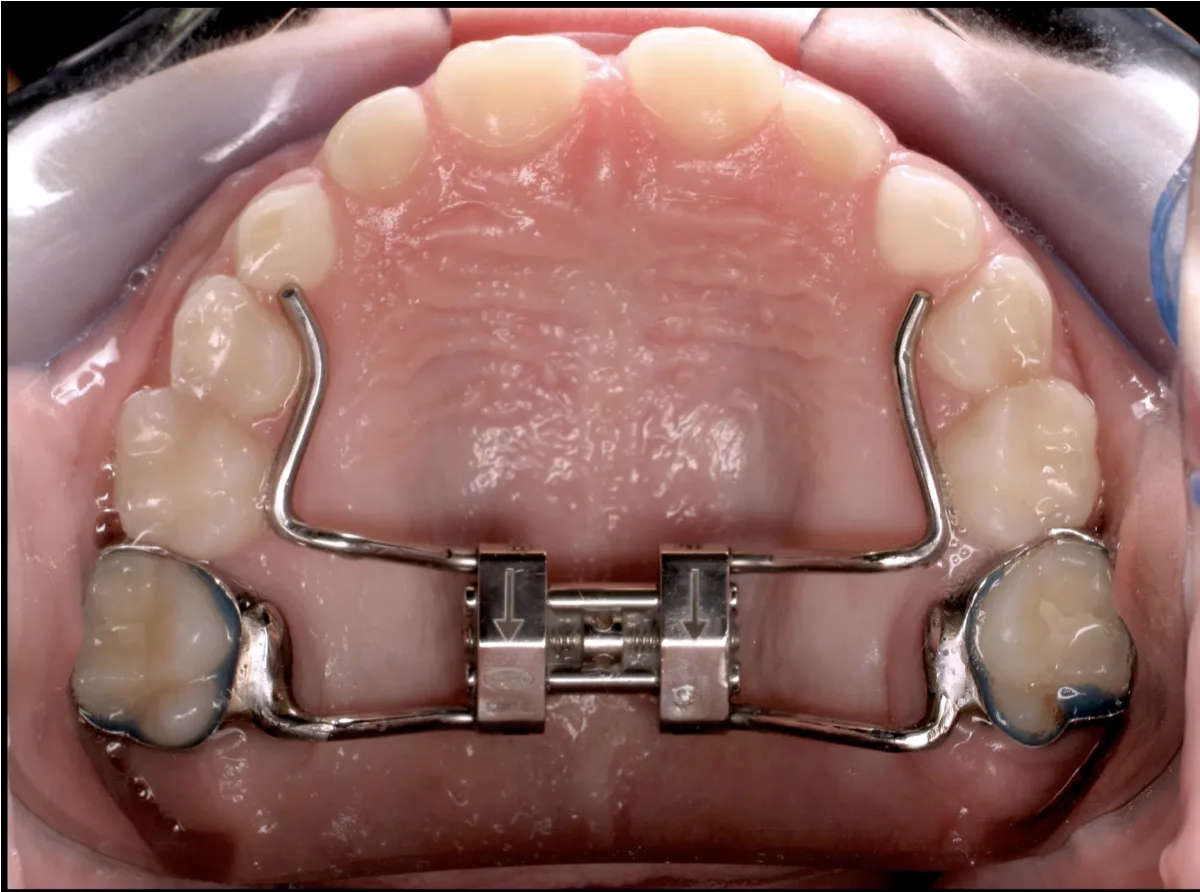
John Mew, the father, apparently invented Orthotropics after learning about the breathing technique invented by Konstantin Buteyko back in the 1960s. The “Buteyko Method” is supposed to treat asthma and other respiratory issues, but there’s no evidence that it does anything of the sort. So, I guess woo begets woo - John learned about one pseudoscience during a trip to Germany, and as a result created a new pseudoscience.
The Mews have also found themselves in the middle of controversy, with dad John Mew having had his licence revoked by the General Dental Council, and son Michael Mew expelled from the British Orthodontic Society. Rather than proving the efficacy of their controversial techniques with science and evidence, the Mews appear to be happier employing social media to spread the word, like this cringily boastful video from son Mike Mew:
Of course, there’s no evidence (beyond lots of subjective pictures) that mewing, or any of the Mews’ Orthotropics techniques, work as a treatment for any medical condition, dental or otherwise. Looking for professional opinions online, I found some choice quotes:
I have looked for published studies on Mewing and found absolutely nothing. Additionally, there is no mainstream scientific evidence on facial growth in adults that supports the concepts behind “Mewing.” Furthermore, when I apply what I know about craniofacial growth, it’s difficult for me to understand how holding your tongue on the top of your mouth can change the position of facial bones. This is not going to happen.
When it comes to the controversial practice of “mewing,” there is no scientific research to support its benefits. Dr. John Mew popularized the technique, which focuses on proper tongue position and breathing to help improve jawlines and possibly correct misalignment issues. While some anecdotal evidence suggests that mewing may be effective in improving facial structure, there is a lack of scientifically backed studies to confirm its efficacy.
Many dental professionals and orthodontists have expressed scepticism. Critics argue that facial structure and development are primarily determined by genetics, and altering these factors through tongue posture alone is unlikely to yield significant changes.
Even kids in Canada have been able to figure out that the technique is nonsense:
Despite the fact that a kid can figure out that Orthotropics is nonsense, some reputable companies like Colgate have been sucked in by the Mews’ nonsense, just blindly quoting the kinds of claims made by Orthotropics practitioners:
Overall, orthotropic treatment may be a good solution to help correct any facial or jaw discrepancies in a growing child. It could be an alternative to other methods, such as orthodontics or surgery
And there’s a documentary on mewing, called Open Wide, that I’m reluctant to watch. It’s made by A24, a film company with a history of making great movies, but the reviews for this documentary seem to suggest that it’s a pro-nonsense whitewash:
I went into this movie expecting an interesting deep dive into the controversial father/son orthodontist duo John Mew and Mike Mew with a balanced discussion of what the broader medical community thinks of them.
Instead, this entire documentary lets these two quacks spout their insane beliefs for the duration of its runtime. The only dissenting opinion is ONE other orthodontist who seems to hate the field entirely. His opinion basically boils down to the Mews being no worse than any other orthodontist because apparently all of orthodontics is a sham.
We get to hear a hundred times how important it is that mewing went viral on TikTok. There’s no analysis or even question that orthotropics is scientifically unproven and potentially harmful. There is no investigation of the online grift industry that has spawned surrounding the Mews. The filmmakers feel far more interested in just letting Mike Mew talk about how important he is and making grandiose comparisons of himself to the likes of Martin Luther and orthotropics as a whole to the Arab Spring.
I tried to watch the documentary while writing this article, but the nonsense spoken by John Mew made me quickly pause it in annoyance. He posits the idea that human faces are broken and need fixing, because when he looks at cows or sheep, they all look exactly the same, and this isn’t the case when he looks at humans. Obviously he’s either ignorant of the fact that humans have evolved with a very sensitive brain mechanism for detecting and differentiating human faces (called Face Perception), and that this ability doesn’t translate very well to other animals, especially those with markedly differently shaped heads, causing us to consider all cows to look the same when in actual fact it’s just that we’re not very good at processing cow faces and registering small differences between them - or he’s just dismissed this information because it doesn’t fit his “theory”.
This nonsense was spoken in the first 60 seconds of the documentary, so I dread to imagine how much worse it’s going to get when I build up the courage to watch the rest of it. Incidentally, the beginning of the film appears to have been filmed in the dining hall of the fake castle with a moat that John had built for him in the 1990s in Sussex, England, and now rents out as an AirBNB. I guess when you have lots of money from bilking poor suckers out of their money in exchange for bad advice, you can spend it on frivolous things like this:

Closer to home, we have some dentists in New Zealand promoting Orthotropics as part of their available treatments, which is disappointing to see:
There’s even been some dodgy behaviour by an Orthotropics provider that had to be dealt with by the Health & Disabilities Commissioner, and although in this case there are some good viewpoints from orthodontists about the lack of evidence of efficacy for Orthotropics, in the end the issues that were flagged regarding the practitioner’s behaviour were about informed consent and a lack of record keeping, and the practitioner seems to have been given a pass on the fact that he was selling people something that’s never been proven to work.
It’s not overly surprising that, despite a total lack of good quality evidence supporting the use of Orthotropics to treat anything, people on the internet appear to have taken this obscure, pseudoscientific idea and elevated it to the status of being something everyone should be doing. However, if you see any kids making a weird shushing gesture, be sure to explain to them that sticking their tongue to the roof of their mouth is not going to give them a chiselled jaw or realign their teeth.
